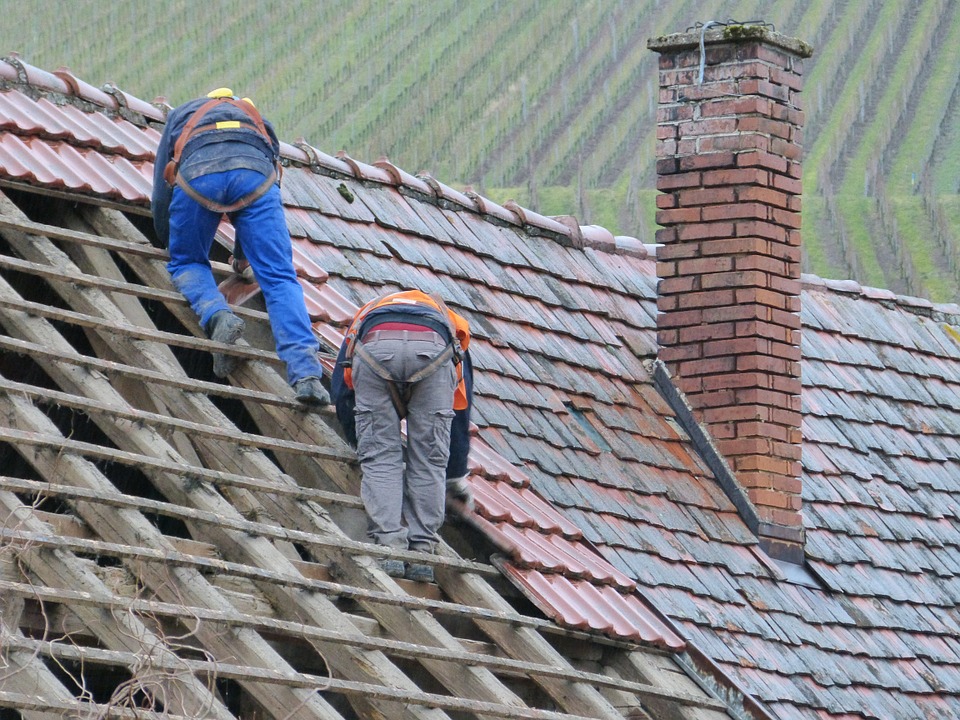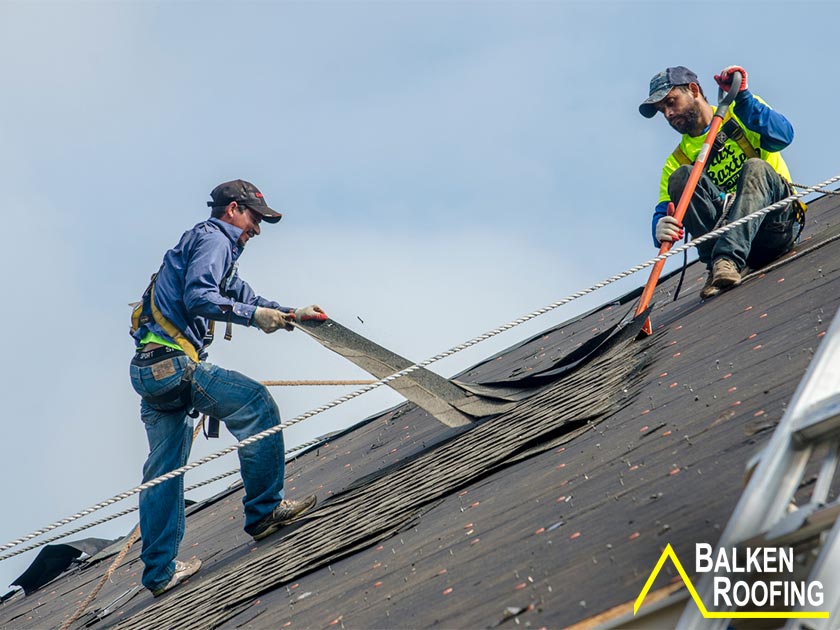Do It Yourself Roofing System Repair Service: A Step-by-Step Overview to Repairing Common Issues
You can tackle common roof covering concerns yourself by starting with a comprehensive inspection for noticeable damages like missing out on tiles or drooping locations. Gather crucial tools such as a strong ladder, roof hammer, and matching replacement tiles. Spot leakages by securing flashing and replacing damaged tiles. Don't forget to maintain seamless gutters and assurance water moves openly. Normal checks help stop costly repair services. There's plenty more to discover! if you're prepared to learn even more about each step.
 roof repair
roof repairEvaluating Your Roof for Damage
Prior to you climb up onto your roofing, it's important to evaluate it from the ground to identify any kind of noticeable indicators of damage. Search for missing shingles, crinkled sides, or staining that may indicate leakages. Maintain an eye out for drooping locations, which can signify structural issues. Keep in mind of any kind of debris, like branches or leaves, that might be capturing moisture.
Following, inspect your rain gutters for granules from tiles or standing water, both of which can indicate roof covering troubles. If you find any kind of discolorations on ceilings or wall surfaces inside your home, these can be indicators of water damage connected to your roof covering.
Don't neglect to analyze blinking around chimneys and vents, as harmed blinking can cause leaks. It's ideal to address it without delay to prevent extra considerable repair work later on if you see anything concerning. Constantly focus on safety and security, and do not wait to call a specialist if required.
Gathering the Required Tools and Materials
Prior to you begin your roof repair work, you require to collect the right devices and materials. Knowing what vital devices you'll need, developing a checklist of needed materials, and focusing on safety and security gear will set you up for success. Allow's discuss what you'll need to tackle this job efficiently and safely.
 roof repair
roof repairVital Tools Review
A strong roofing repair work begins with the right devices and materials at your side. Get a strong ladder to securely access your roofing system.
Safety equipment is vital as well; a set of job gloves this blog and safety goggles will certainly safeguard you from sharp sides and particles. A tape procedure guarantees specific dimensions while a lever helps remove damaged roof shingles. With these tools in hand, you'll prepare to deal with numerous roofing system fixings with confidence.
Required Products Checklist
With your tools ready, it's time to collect the materials required for your roofing repair service. First, check your shingles. If they're damaged, acquire matching replacement shingles. You'll likewise need roof covering nails, a solid adhesive, and a sealant to guarantee whatever remains leak-proof. Don't forget a tarpaulin or roof paper to safeguard subjected locations while you work. If you're handling leakages, consider purchasing a water resistant membrane as well. For blinking repair services, acquire brand-new blinking materials that fit your roof type. Get a container or container for any particles you'll get rid of. Having all these materials accessible will certainly make your fixing procedure smoother and extra effective, so you can do the job right.
Safety And Security Gear Importance
While you could be passionate to begin your roofing repair, do not forget the value of safety equipment. Non-slip footwear are important for preserving hold on the roofing system's surface. A harness is a must if your roofing system is high or high, stopping drops.
Covering Roofing Leaks
When you notice a leakage, the primary step is determining its resource to ensure an efficient spot. You'll need to pick the best materials for an enduring fix as soon as you pinpoint the problem. We'll stroll you with the most effective application techniques to secure those leaks and safeguard your home.
Identifying Leakage Resources
Exactly how do you identify the resource of a roofing system leakage? Beginning by examining your roof for noticeable damage or wear. Seek fractured tiles, missing tiles, or rusted flashing. After that, check the locations around smokeshafts, skylights, and vents, as these are common leak places. Climb up to your roof covering and visually scan for any abnormalities if it's safe. After hefty rainfall, go within your attic or top floorings to seek water spots or drips. Make use of a flashlight to help you see much better in dark areas. If you can't discover the source, consider making use of a garden hose pipe to mimic rainfall, section by section, up until you recognize where the water goes into. This method can assist narrow down the leak's origin.
Picking Spot Products
Picking the ideal spot materials is important for properly fixing a roofing leakage. Take into consideration the kind of roof you have-- tile, steel, or flat. For roof shingles, select roof covering concrete or asphalt patches. A metal patch and sealant job best if you've obtained a steel roof. For level roofings, use a specialized patching product developed for that surface.
Constantly ensure the products are suitable with your existing roofing to guarantee a resilient repair. Additionally, check the weather conditions; some materials require completely dry or cozy temperature levels to stick properly. Ultimately, select premium products to avoid frequent repair work down the line. By choosing the ideal materials, you'll set on your own up for an effective patching work.
Application Methods Explained
Using patch materials efficiently is important for sealing roofing leaks and preventing further damage. Beginning by cleaning up the area around the leak, removing any kind of particles, dust, or loosened roof shingles. This guarantees a strong bond between the spot and the roofing system surface area. Next off, reduce your spot product to fit over the harmed location, extending it at the very least two inches past the edges of the leakage. Apply a charitable layer of roof adhesive or sealant to the location, then press the patch strongly right into area. Ravel any kind of air bubbles and verify the sides are well sealed. Ultimately, use an added layer of sealant over the spot borders for additional protection. Enable the spot to heal totally prior to revealing it to rain or extreme climate.
Replacing Broken Tiles
When you see harmed shingles on your roof covering, it's essential to attend to the concern quickly to stop additional leaks and structural damage. Thoroughly lift the harmed shingle with your pry bar to remove it without disturbing the bordering roof shingles. With these fast steps, you can properly replace broken roof shingles and maintain your roof's stability.
Cleaning Up and Preserving Gutters
To keep your roofing system in top condition, on a regular basis cleaning up and preserving your gutters is essential. Clogged rain gutters can lead to water damage, mold growth, and also structural concerns. Beginning by checking your rain gutters for debris like leaves, twigs, and dust. Utilize a durable ladder and use gloves to eliminate any buildup. An inside story or trowel can help you clear persistent obstructions.
Next, flush your seamless gutters with a garden hose pipe to ensure water streams easily. Look for leakages or corrosion spots while you go to it. Consider using a sealant or replacing afflicted sections. if you see any kind of concerns.
To stop future obstructions, set up gutter guards or screens, and make it a habit to cleanse your seamless gutters a minimum of two times a year, especially prior to hefty rainfall or snow. Regular maintenance not only prolongs the life of your rain gutters yet additionally safeguards your entire roof system.
Sealing Roofing System Vents and Flashing
Sealing roofing system vents and blinking is essential for preventing leakages and safeguarding your home from water damage. Beginning by evaluating the areas around your roof vents and flashing for any type of spaces or cracks.
Apply the sealer generously, filling up all gaps and cracks, then smooth it out with your finger or a caulking tool for a neat coating. See to it the sealer prolongs a little past the sides to develop a strong bond.
Allow the sealer to cure according to the maker's instructions, typically a few hours or over night. After sealing, it's a great idea to examine your work after a rainstorm to verify everything remains water tight. Regular maintenance of your roofing vents and blinking can conserve you from expensive repair services down the line.
Fixing and checking Roofing system Valleys
Roof covering valleys are crucial locations where 2 slopes satisfy, and they play a crucial duty in guiding water away from your home. To examine your roofing system valleys, start by climbing up safely and looking for indications of damages like loose shingles, fractures, or particles.
For minor repair services, replace damaged roof shingles and apply roof cement to seal voids. You may require to get rid of the damaged area and install new blinking if the valley is extensively damaged. Ensure to overlap the new materials effectively to assure a tight seal. After completing your repair services, keep track of the valleys throughout hefty rainfall to confirm they're functioning appropriately. Looking after roof valleys promptly will help protect your home from water damages and extend the life of your roof covering.
Frequently Asked Concerns
How Can I Establish if My Roofing System Needs Replacement Instead of Repair Work?
To determine if your roofing system needs substitute, look for substantial damages, drooping locations, or missing shingles. Consider substitute over repair work. if leakages continue despite fixings or it's nearing the end of its lifespan.
What Safety and security Precautions Should I Take While Repairing My Roof?
When fixing your roof, always use a harness and non-slip shoes. See to it your ladder's steady, prevent functioning in poor climate, and have a person nearby to assist you in instance of emergency situations.
How Usually Should I Examine My Roofing System for Damages?
You ought to examine your roof at the very least twice a year, preferably in springtime and autumn. After serious weather, check for damage too. Regular assessments can assist you capture problems before they develop into costly repair work.
Can I Fix My Roofing in Bad Weather Conditions?
You should not try roof covering repair services in poor climate. Rainfall, snow, or strong winds can boost dangers and complicate the process. Wait on clear conditions to guarantee your security and attain an appropriate fixing.
What Should I Do if I Come across Wildlife in My Attic During Fixes?
If you run into wild animals in your attic room during repair work, stop right away. Safeguard the location, stay clear of startling the animals, and get in touch with a specialist wild animals removal service to safely take care of the situation before continuing your work.
Prior to you start your roof repair work, you require to collect the right tools and materials.A strong roof covering repair begins with the right tools and materials at your side.With your devices ready, it's time to gather the materials needed for your roofing fixing.Selecting the best spot products is important for effectively repairing a roofing system leak. Taking treatment of roofing system valleys immediately will help protect your home from water damages and extend the life of your roof covering.